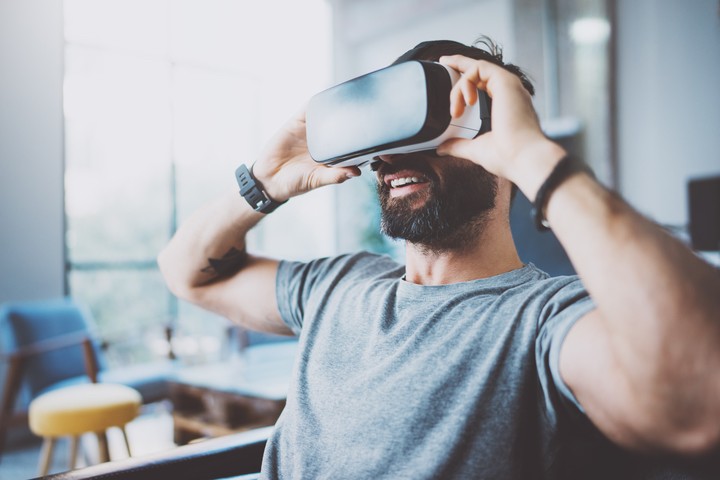By Telmo Bauler and Victor Tulli
For many years humanity has been planning to experience its dreams, to have access to a universe with no limit in which you can do everything or even be able to share you private universe with someone. This dream, powered by the seventh art in Matrix, or more recently in Black Mirror, has gained countless tools and advances to other areas, such as real estate.
Virtual Reality vs Augmented Reality
First of all, it is necessary to divide two important areas: virtual reality and augmented reality, because even if interlinked, they are different revolutions. Virtual reality is the one that you use to build a digital scenario, a world with no limits or quite verisimilar, and an avatar, representing you, is who interacts with this world. While Virtual Reality (VR) allows you to create an imaginary world with everything you want, what Augmented Reality does is add digital elements (additional information in the form of graphics or images) to our real environment.
What is Augmented Reality?
Augmented Reality is the projection of virtual, digital elements, in the reality that we are used to, like Google Glass proposed or Instagram filters already do. Augmented Reality (AR) is a technology that allows you to superpose virtual elements to our view of reality. Increasingly demanded, this technology will become a business that will move, in 2020, about 120 billion dollars in the world.
What is its functionality?
Creating an Augmented Reality can be very good for anticipating the vision of a construction or for training brokers, engineers, on a specific project. It improves the user experience and product customization, such as a decoration projection on an empty property. Some companies already use Augmented Reality so that the customer can check in real time how their home will look after the works are completed or how the new armchair will match the décor.
Now, whatever mode you choose, it is a fact that this technology, driven by our moment of greater virtualization, less contact and more personality in products and services, has strong commercial power: more than augmented reality, this is more sales.
Virtual tours in the property, decoration projections, customize the product together with the client, and views in real time are tools that increase the emotional experience, sensitive of the buyer. In addition, with more tools that detail the product, visits become more assertive, fewer visits and more closed businesses.
Benefits of Augmented Reality
Check the summarized benefits and sharpen your client millennial dream to project his dream on to his property:
- Less physically decorated, more customizable, virtually decorated for each type of client;
- More assertive visits, less energy wasted;
- Cost reduction and investments optimization;
- More interesting sale and experience;
- Futuristic brand advertising and positioning;
- Projection of the client dreams, sharpened emotional.
For the Construbusiness Committee of Brazil-Israel Chamber in Rio de Janeiro, Augmented Reality is more comprehensive than Virtual Reality, because it makes it possible to be present in the spaces of a real environment enjoying other projected visual experiences. Therefore, the possibilities of Augmented Reality in the Real Estate Industry, both in professional and personal environments, are unquestionable.
Sources:
Connection with Israel: Army training using AR:
Israeli Startup of Augmented Reality:




Leave A Comment